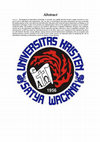Papers by Roman K Kovalev

Using specific coin types (tenth-century dirhams and pre-970 Byzantine miliaresia) imported from ... more Using specific coin types (tenth-century dirhams and pre-970 Byzantine miliaresia) imported from the eastern Mediterranean and upper Mesopotamia in a very restricted chronological period (950s-960s) through (the Dnepr River) and into a confined region of the Northern lands (mainly Sweden) – combined with the evidence of Arab, Byzantine, and Rus’ written sources – this study argues that it is possible to trace numismatically the participation of Rus’ mercenaries in the Byzantine-Arab wars of the late 950s-960s. While dirhams discovered in the Northern lands are most commonly associated with trade relations between the Islamic world and Viking-age Northern Europe, the coins considered in this study offer a unique opportunity to identify and examine some of the non-commercial origins of silver imported into the region: they were products of loot and payments, generated by the Rus’ from their military operations in the eastern Mediterranean basin in the 950s-960s
The Expansion of Orthodox Europe, 2017
The Encyclopedia of Empire, 2016
Histoire & mesure, 2002
… studies: ëZěHurnal ukračinoznavchykh studići, 24 (2), …, 1999
An academic directory and search engine.
Archivum, 2003
An academic directory and search engine.
Archivum, 2005
An academic directory and search engine.
Archivum, 2001
An academic directory and search engine.
Page 1. The Other Europe in the Middle Ages vars, Bulgars, Khazars and Cumans Edited byFlorin Cur... more Page 1. The Other Europe in the Middle Ages vars, Bulgars, Khazars and Cumans Edited byFlorin Curta With the assistance of Roman Kovalev BRILL Page 2. ... Page 3. East Central and Eastern Europe in the Middle Ages, 4501450 General Editor Florin Curta VOLUME 2 Page 4 ...

Development of information technology is currently very rapidly and has become a major necessity ... more Development of information technology is currently very rapidly and has become a major necessity in every good work by individuals and organizations. this was due to technological innovation information has been promoting the implementation of the work effectively and efficiently. Education and Youth and Sports Department of Salatiga use of information technology in their work activities.one implementation shown in the application acceptance of new students conducted online. The problem is until now not related to effectiveness evaluation calibration. therefore, the evaluation carried out by the Innovation and Diffusion Theory approach and data collection is done by qualitative methods. Five characteristics of IDT has made the registration process in the filter values more transparent and centralized but there are still obstacles that have strong influence among internet network infrastructure inadequate, lack of recognition and training intensive, and less attention to the needs of users of the system is an important aspect in optimizing the role of information technology in information systems acceptance of new learners.

Russian History, 2012
This study attempts to interpret the symbols (a falcon “crowned” with a cross, a key, and a Riuri... more This study attempts to interpret the symbols (a falcon “crowned” with a cross, a key, and a Riurikid bident) found on a newly discovered tenth-century trapezoidal pendant from Pskov. Aside from a handful of imitation dirham coins that carry identical images of the falcon, no other parallels of these symbols or their combination have yet been discovered. Based on various sources, it is argued that the pendant was jointly issued to a Rus’ administrator-revenue collector by Grand Princess Olga and her son Sviatoslav at the time of his minority but not prior to Olga’s administrative reforms in the late 940s, i.e., ca. 950. While the bident was Sviatoslav’s dynastic emblem (reserved for reigning male Riurikids), Olga’s authority over the realm and her minor son was represented by way of a key (latchlifter) and a falcon. The key carried legal and possibly religious symbolism of right over the domain, while the falcon represented religious as well as royal authority. But, both emblems can ...
Speculum, 2006
Información del artículo The Dynasty of Chernigov, 1146-1246.
Russian History-histoire Russe, 2005
Información del artículo BIBLIOGRAPHY - Addenda to the Thomas S. Noonan Bibliography.
Russian History-histoire Russe, 2005
Información del artículo Festschrift 2 for Thomas S. Noonan - Introduction.
An examination of 159 hoards with 1822 dirhams minted at Damascus during the first four centuries... more An examination of 159 hoards with 1822 dirhams minted at Damascus during the first four centuries of Islam sheds much light on a number of important questions regarding the economic history of the Near East during the Umayyad, ‘Abbāsid, and Ikhshīdid eras. Using the hoard-count method of estimating mint outputs, it has been determined that the Damascus mint was significantly active only during the Umayyad period, a time when the city was the capital of the caliphate. Having no local silver mines and lacking revenue transfers from the provinces after 127 H, Damascus was, at best, a marginal mint for the production of dirhams. However, because Syria and the eastern Mediterranean region in general fell into a gold-copper metallic zone during the period in question, it is surprising that Damascus was at all an important mint when the city was the capital of the Islamic world.
Acta Byzantina Fennica, 9 (??),??-??., 1999
An academic directory and search engine.
Russian History, 2000
Información del artículo What Can Archeology Tell Us About How Debts Were Documented and Collecte... more Información del artículo What Can Archeology Tell Us About How Debts Were Documented and Collected in Kievan Rus'?
Russian History Histoire Russe, 2005











Uploads
Papers by Roman K Kovalev